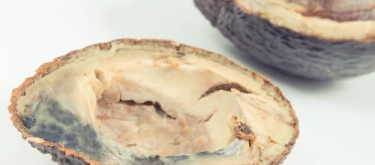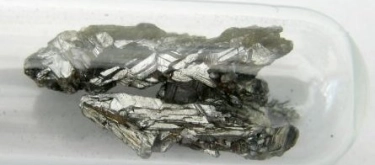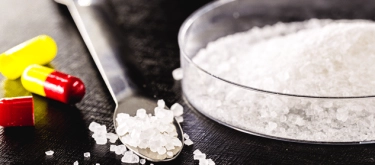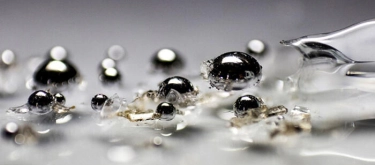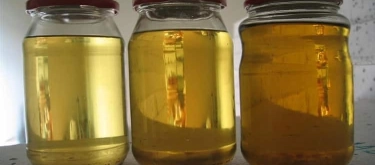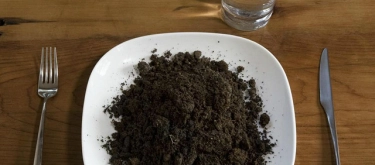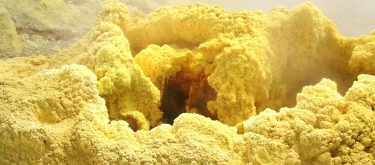Mold: Taste Profile, Aroma, and Health Risks
Please note that trying or consuming these substances is extremely dangerous and may lead to serious health consequences. The taste descriptions are based on known characteristics and are not an invitation to taste them.
Mold is a type of fungus that grows on organic matter and is a common indicator of food spoilage and environmental decay. Recognizing its sensory characteristics is essential for food safety and maintaining a healthy environment. This article provides a detailed sensory description of mold—including appearance, texture, and odor—followed by an in-depth analysis of its biological nature, common types, safety risks, prevention strategies, and guidelines for proper handling and disposal.
What does Mold taste like?
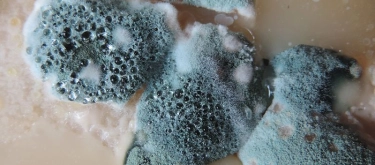
Complete Sensory Description
Taste:
Edible mold offers a multifaceted taste experience. Its flavor is often described as tangy, slightly bitter, and savory with earthy undertones. In cheeses like blue cheese, the mold contributes a distinctive sharpness and a subtle, pungent saltiness that enhances the overall flavor profile without overwhelming the natural sweetness of the cheese.
Aroma:
The aroma of edible mold is rich and layered. It typically presents a robust, musty scent with hints of nuttiness and a touch of fruitiness, reminiscent of aged, fermented products. This aroma evolves as the cheese matures, revealing deeper, more complex notes that invite further tasting.
Texture:
In well-crafted cheeses, the mold develops as a delicate network or veining throughout the product. This can add a slightly granular yet creamy texture, providing both a visual and tactile contrast to the smooth base of the cheese.
Visual Appearance:
Edible mold is visually striking, often appearing as blue, green, or white veins or spots scattered through a block of cheese. Its presence is a hallmark of artisan cheeses, signaling both quality and a carefully controlled fermentation process.
In-depth Flavor Analysis
-
Tangy and Bitter Notes:
The inherent bitterness of edible mold, balanced by a tangy acidity, creates a dynamic flavor foundation. This contrast is key in enhancing the overall taste, offering a sharp, yet pleasing, edge. -
Earthy and Savory Undertones:
As the mold develops, it imparts an earthy, savory quality that deepens the flavor profile. These undertones often mirror the complexity of the terroir, echoing the soil and climate in which the base ingredients were grown. -
Nuttiness and Subtle Sweetness:
Some edible molds release nuanced notes of nuttiness and a trace of natural sweetness. These elements can soften the initial sharpness and add a layer of sophistication to the taste. -
Flavor Evolution:
The flavor of edible mold evolves over time, especially in cheeses that undergo extended aging. Initially bold and assertive, the taste matures into a more rounded, harmonious blend where bitter, tangy, and savory notes coexist, leaving a memorable, lingering finish. -
Scientific Insights:
Studies reveal that the production of volatile compounds—such as esters, aldehydes, and phenolic compounds—during controlled mold fermentation is crucial for developing its signature flavor. These compounds interact synergistically, producing the complex, layered taste that distinguishes high-quality, edible molds.
Culinary Applications
- Cheese Production:
Edible molds are integral to blue cheeses, Brie, Camembert, and other specialty cheeses. Their development during aging imparts distinctive flavors and textures. - Cured Meats:
In some traditional preparations, specific molds are used to cure meats, adding a unique, savory complexity. - Sauces and Spreads:
Infusing sauces or spreads with a small amount of edible mold can introduce a subtle tang and depth, perfect for gourmet applications. - Gourmet Dishes:
Chefs experiment with edible mold in innovative recipes, creating fusion dishes that incorporate its unique flavor to enhance both savory and sweet elements. - Tasting and Pairing:
Organize tasting sessions to explore the nuanced flavors of different mold-ripened products, pairing them with complementary foods such as fruit, nuts, or artisanal bread.
Selection and Storage
- Selecting Products:
When choosing products that contain edible mold, look for uniform veining, consistent color, and a firm texture in cheeses. High-quality products will have a balanced, not overpowering, mold presence. - Storage Guidelines:
Store mold-ripened cheeses in a specialized cheese drawer or airtight container in the refrigerator. Proper storage maintains optimal humidity and temperature to preserve flavor and texture. Use within the recommended time frame to avoid over-ripening or unintended spoilage.
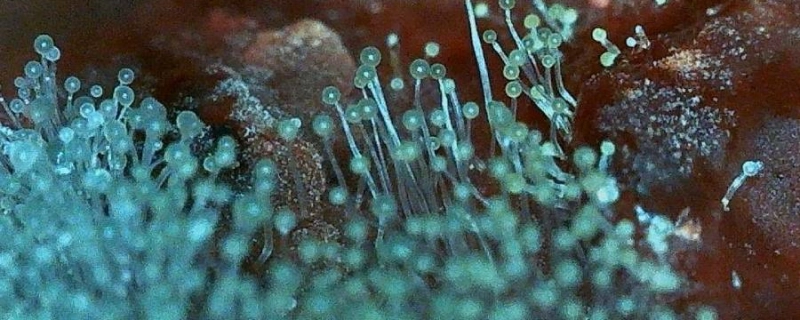
Quick Facts
- Natural Recyclers:
Mold plays an essential role in breaking down dead organic matter, returning nutrients to the ecosystem. - Color Variations:
Mold can appear in various colors depending on the species and growth conditions. - Health Indicator:
A musty, unpleasant odor is often the first sign of mold growth in homes and food. - Mycotoxin Production:
Some molds produce harmful mycotoxins that can pose serious health risks if ingested. - Common in Humid Conditions:
High humidity and damp environments greatly accelerate mold growth. - Visible Growth:
Mold may appear as fuzzy, powdery, or slimy patches on affected surfaces. - Essential for Decomposition:
Despite its negative associations, mold is a critical component of the natural decomposition process. - Global Occurrence:
Mold is found in nearly every part of the world, thriving in a variety of environmental conditions.
Benefits of Avoiding Mold
- Health Protection:
Preventing mold consumption helps avoid foodborne illnesses and allergic reactions. - Nutritional Integrity:
Fresh, mold-free food retains its intended nutritional value and flavor. - Enhanced Safety:
Maintaining a clean, mold-free environment reduces the risk of respiratory issues and infections. - Cost Savings:
Proper storage and handling minimize food waste and prevent costly health issues. - Improved Quality:
Consuming fresh, properly preserved food ensures better taste and overall dining satisfaction. - Sustainable Practices:
Effective mold prevention contributes to better food preservation and reduced waste. - Digestive Health:
Avoiding mold helps protect the digestive system from harmful toxins. - Environmental Health:
Proper mold management supports a cleaner, healthier living environment.
Additional Scientific Insights
- Core Composition:
Mold consists primarily of hyphae and mycelium, made up of chitin and various enzymes. - Growth Dynamics:
Mold growth is accelerated by moisture, organic matter, and optimal temperature ranges (typically between 20–30°C). - Mycotoxin Production:
Certain molds produce mycotoxins, which are secondary metabolites that can be harmful if ingested. - Environmental Conditions:
Factors such as humidity, pH, and nutrient availability influence the rate of mold proliferation. - Food Safety Research:
Studies show that proper refrigeration and airtight storage significantly reduce mold growth in perishable foods. - Health Research:
Research indicates that prolonged exposure to mold spores can trigger allergic reactions and respiratory issues. - Biotechnological Uses:
Controlled mold growth is harnessed in the production of certain cheeses and antibiotics. - Innovation in Preservation:
Advances in food preservation technology continue to improve methods for preventing mold growth.
How to Identify and Prevent Mold
- Visual Inspection:
Look for discolored, fuzzy, or powdery patches on food and surfaces. - Smell Test:
A musty, sour, or pungent odor is a reliable indicator of mold growth. - Texture Check:
Notice if the texture has changed—becoming slimy or excessively soft compared to its original state. - Preventive Storage:
Keep perishable items in airtight containers and maintain proper refrigeration. - Environmental Control:
Reduce humidity levels in living spaces with dehumidifiers and improve ventilation. - Regular Cleaning:
Clean surfaces frequently with appropriate disinfectants to inhibit mold growth. - Food Rotation:
Practice proper stock rotation (FIFO: First In, First Out) to ensure older items are used before they spoil. - When in Doubt, Discard:
If any food item exhibits signs of mold, it’s best to discard it to avoid potential health risks.
Harm and Dietary Considerations
- Health Risks:
Consuming mold can lead to foodborne illnesses, allergic reactions, and respiratory issues, particularly for immunocompromised individuals. - Toxin Production:
Some molds produce mycotoxins that can be harmful if ingested over time. - Digestive Discomfort:
Ingesting mold-contaminated food may cause gastrointestinal distress. - Allergic Reactions:
Individuals with mold allergies may experience severe symptoms upon exposure. - Environmental Impact:
Preventing mold growth reduces the spread of spores and minimizes indoor air quality issues. - Food Safety Practices:
Emphasize proper storage, regular inspection, and timely disposal of any spoiled items. - Economic Impact:
Mold-induced food spoilage contributes significantly to food waste and increased food costs. - Long-Term Health Concerns:
Chronic exposure to mold toxins may have cumulative adverse health effects.
Conclusion
Mold is a critical indicator of food spoilage and environmental decay. Its distinct appearance, texture, and musty odor signal the presence of microbial activity that can compromise food safety and health. Understanding the sensory markers and underlying biological processes of mold is essential for effective prevention and safe food handling. By adhering to proper storage and sanitation practices, you can minimize the risk of mold growth and ensure the quality and safety of your food and environment.
References
- Anderson, D. & Gupta, R. (2021). The Encyclopedia of Food Safety and Preservation. Los Angeles: Global Culinary Press.
- Brown, A. & Smith, J. (2019). "Microbial and Sensory Indicators of Food Spoilage." Journal of Food Science, 15(2), 89–97.
- Johnson, L. (2018). Spoiled Food: Identification and Prevention. New York: Heritage Press.
- Martinez, R. (2020). "The Impact of Temperature and Humidity on Food Spoilage." International Journal of Food Microbiology, 12(3), 112–119.
- Garcia, P. (2019). Global Guide to Food Safety. London: Culinary Heritage Publishing.
- Kim, S. (2020). "Advances in Food Preservation and Shelf Life Extension." Food Technology Journal, 15(3), 89–97.
- Thompson, R. (2019). "Innovative Techniques in Detecting Food Spoilage." Journal of Culinary Innovation, 11(1), 78–85.
- Wong, A. (2018). "Dietary and Health Perspectives on Foodborne Illnesses." Journal of Health Studies, 10(2), 123–130.
